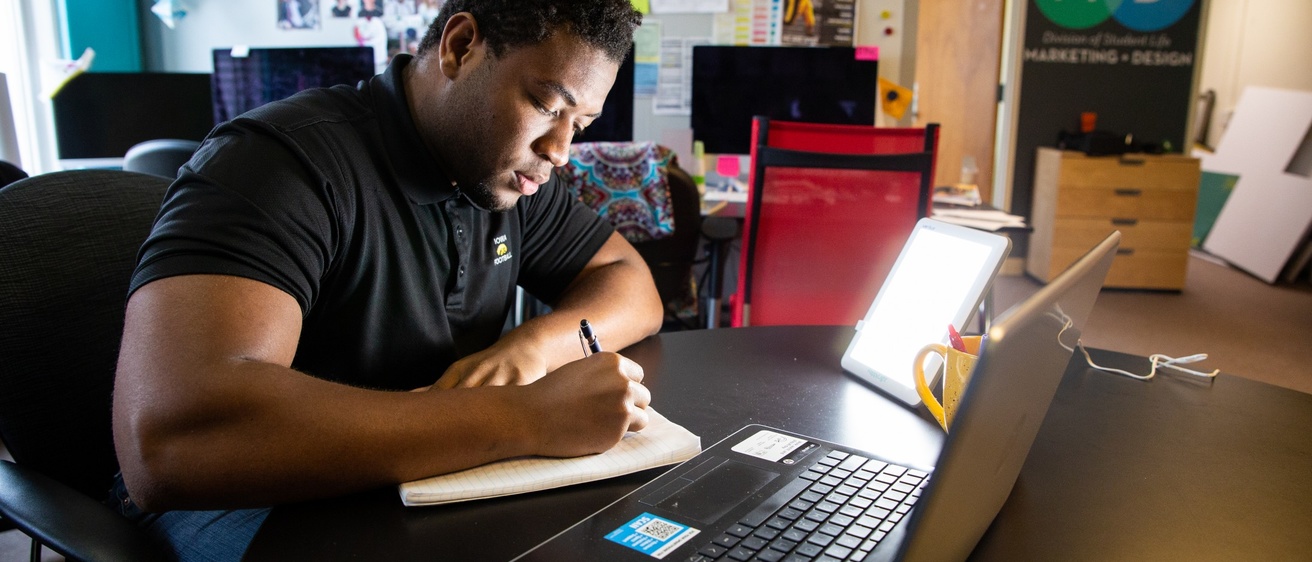Light therapy is one way to help treat Seasonal Affective Disorder (SAD), a form of depression associated with the lack of natural light during the winter months. Student Wellness offers students the ability to check out light boxes to try for free for one month during the fall, winter or spring semesters.
During light therapy, you sit near a device called a light therapy box. The box gives off bright light that mimics natural outdoor light. Light therapy is thought to possibly affect brain chemicals linked to mood and sleep, easing symptoms of SAD.
Checking out a light box
Current students can check out a light box for free for one month to use in their own space. Lights will be checked out in-person on a first come, first served basis. They are available at one location:
CRWC in the Wellness Services Suite (on first floor) - Primary location
Monday-Friday - 8am-4:30pm
Wellness Suite is closed on all University Holidays and may close at 4PM during academic calendar breaks.
To check out a light box, you will need to show your student ID. Students should return the light to the same location where it was checked out.
For best results...
- Follow the manufacturer’s instructions for using the light box.
- Light therapy requires time and consistency. Response usually starts in a few days, and by two weeks the symptoms should be improving.
- It is best to utilize the lamps daily for approximately 20 – 30 minutes. If this is not possible, a regular routine schedule is best (e.g. every other day).
- The morning, as soon as possible after waking, is the optimal time for light therapy.
- During light therapy, you should keep to a regular sleep schedule (going to sleep and waking up at regular times, for example, 11:00 p.m. to 7:00 a.m.).
- The light should be projected toward the eyes at an angle to minimize aversive visual glare.
- The typical recommendation is to sit approximately 6 to 24 inches from the light box.
- To be effective, light from the light box must enter your eyes directly. You cannot get the same effect merely by exposing your skin to the light. Sleeping with the light box on will not be effective. During light therapy sessions, you can still read, use a computer, write, talk on the phone, or eat.
- Any student who is currently taking medication that can cause photosensitivity (common examples include tetracycline, erythromycin) should only use the light box with extreme caution.
Risks
Light therapy is generally safe and does not require a prescription to use. If side effects occur, they're usually mild and short lasting. Some people can experience mild headaches, nausea, dizziness, or eye strain when using the light box. These symptoms usually occur at the beginning of treatment, and get better in a few days. Otherwise, they can be relieved by reducing the daily exposure time, or by sitting slightly farther away from the lights.
Occasionally, people report feeling irritable, or euphoric, or being “too high” when using light therapy. People with bipolar disorder (manic-depressive illness) should consult with a therapist or medical provider before using light therapy.
While your eyes must be open, do not look directly at the light box. There are no reported harmful effects on the eyes with light therapy as recommended, but the long-term effects have not yet been studied. If you have eye problems (e.g., retinal disease, cataracts, or diabetes), or worries about eye damage, please see your medical provider.
Light therapy is only one means to treat depression brought upon by seasonal affective disorder. Please consult a mental health professional or other healthcare provider if you have concerns.
Additional notes
In selecting light boxes, we followed guidelines from the Mayo Clinic and based our decision on something that was compact enough for students to carry and relatively affordable.
The light box models we use are the Verilux HappyLight Lucent and LumiPlus
Please email Becca Don with any questions.
This program is provided in collaboration with University Counseling Service. Thank you to the Undergraduate Student Government for providing funding for the light boxes.
